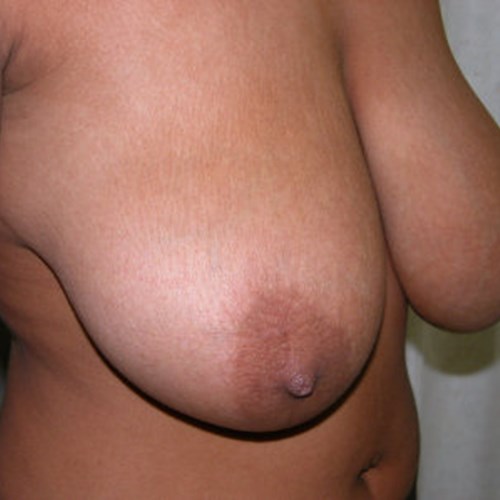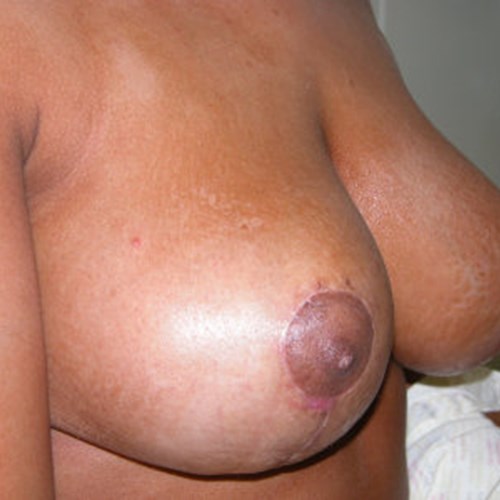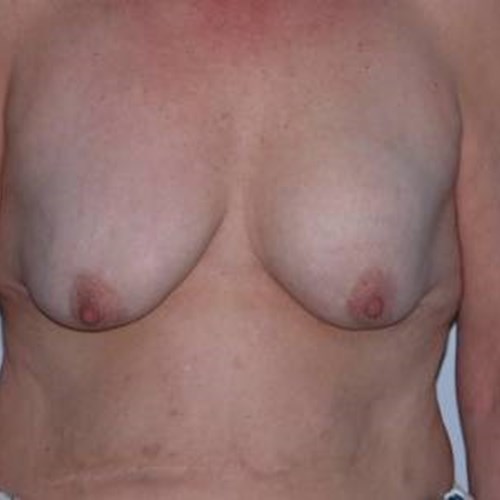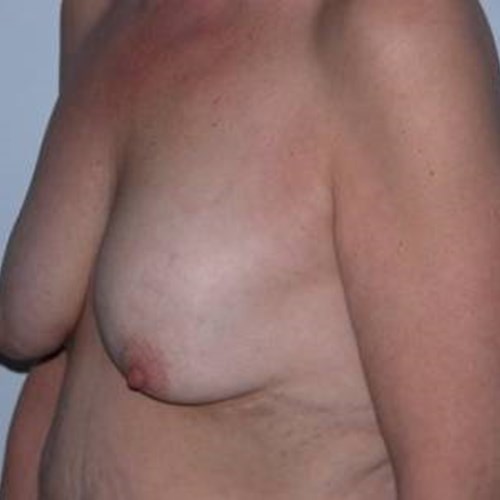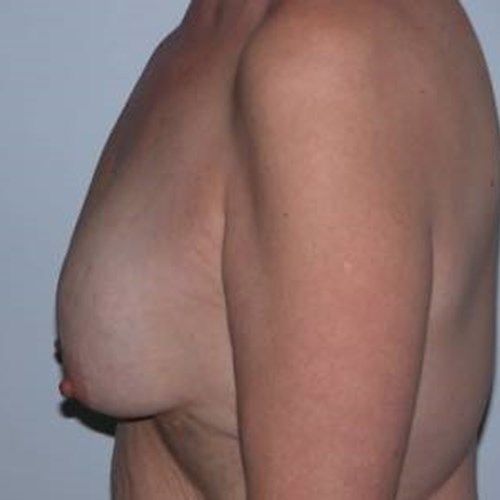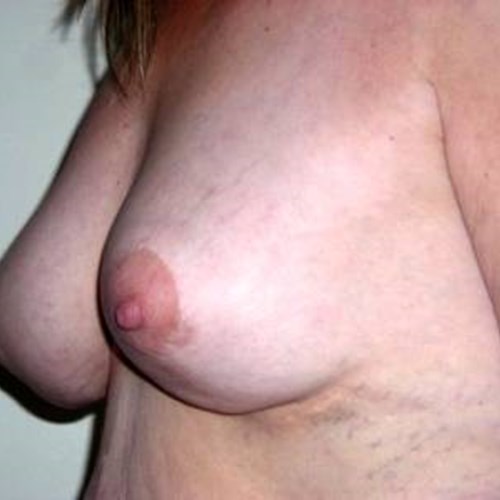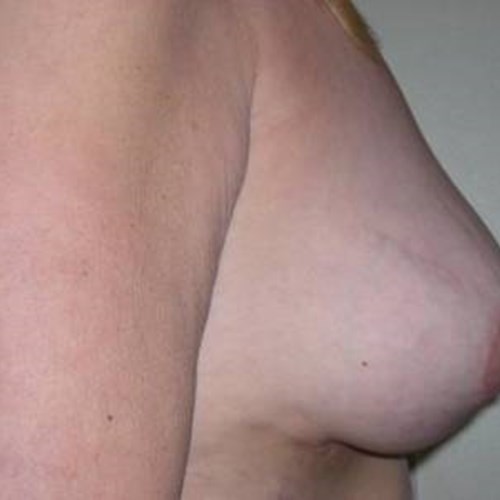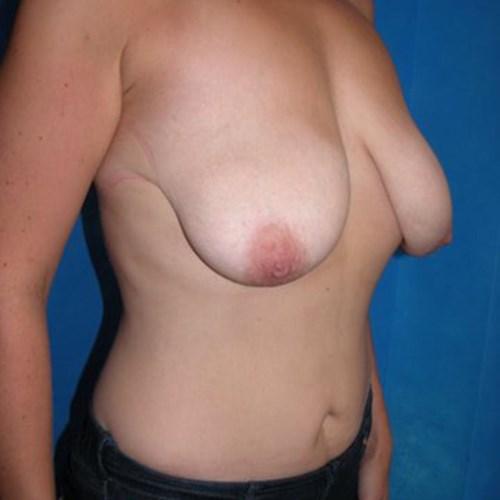Who is a suitable candidate for Mastopexy?
Ideally you should be of normal weight for height, not overweight, when the operation is done. Any woman with droopy (ptotic) breasts may be a candidate for the operation.
With aging and pregnancies the breasts begin to droop. They may also lose volume and sometimes the mastopexy operation is done with the insertion of silicone breast implants to improve volume at the same time.
A mastopexy operation can improve your self-image, self-confidence and self-esteem. It can liberate you and allow you to wear clothing without a bra. It cannot bring back the breasts that you had when you were a young woman, but it can reshape and improve on your current breast shape.
The best candidates are those who fully understand the procedure and those who have realistic expectations about the results. The operation does not stop the effects of aging and gravity on your breasts, and with time droop will slowly return to your breasts.
What are the risks?
When performed by a qualified plastic surgeon, mastopexy is normally safe and the results predictable. Nevertheless, as with any surgery, there is always a possibility of complications, including bleeding, infection, or reaction to the anaesthesia. Some patients develop small sores along the lines of the incisions after surgery; these generally heal of their own accord or may require the removal of a suture.
The procedure does leave permanent scars, although your bra or bathing suit will cover these. The usual scar circles the areolae, extends vertically down to a scar underneath the breast, similar in shape to an anchor. An alternative mastopexy operation is possible if the droop is milder and leaves you with a scar around the areolae and down to the bottom of the breast missing out the horizontal scar under the breast. The scar then looks like a lollipop. Poor healing and wider scars are more common in smokers. The procedure can also leave you with slightly mismatched breasts, unevenly positioned nipples or some breast asymmetry. Future breast-feeding may be difficult, since the surgery may interfere with milk ducts leading to the nipples.
Some patients may experience numbness in their nipples or breasts. In most patients this resolves within a few months of surgery although sometimes it may last for up to two years and can, rarely, be permanent. Rarely, the nipple and areola may lose their blood supply and the tissue will die. (The nipple and areola can usually be rebuilt, however, using skin grafts from elsewhere on the body.)
What can be expected at the initial consultation?
At the initial consultation you will be assessed as to whether you are a good candidate for the operation. Your fitness for the procedure will be evaluated and potential problems sought. Your breasts will be examined and measured.
It is important to bring to your surgeon’s attention any previous breast problems that you may have had. Such problems would include breast lumps, nipple discharge, breast pain, breast cancer and any surgery you might have had on the breasts. You should also inform your surgeon as to whether you have any family history of breast cancer, particularly in your mother or sisters. If you are on any chronic medication, if you have any allergies, if you have a tendency to bleed or bruise easily, if you have had any previous surgery, if you have had any previous problems with local or general anaesthesia and if you have any chronic medical ailments, tell your surgeon. You should also discuss what your goals and expectations are. Clearly, these should be realistic.
How should one prepare for the operation?
Ideally the operation is done when you are at your normal weight and no specific diet or exercise program is required prior to surgery. In general you should be healthy and fit to have the procedure. If you gain weight after the operation, your breasts may enlarge slightly. Exercise will be easier after the operation.
It is advisable to stop smoking ( and be off all nicotine replacement) at least one month prior to surgery and not to smoke till the wounds have healed - about two weeks after the operation. It is well known that there is a higher frequency of complications in women who continue to smoke. Best of all stop smoking altogether. Arnica (a homeopathic remedy) started a day or two prior to surgery, and continued for about 10 days afterwards, may help to diminish swelling and bruising.
On the day of surgery, you should be feeling fine and not have flu, a cold or any other illness. If you think you might be anxious the night before surgery, a sedative can be prescribed. It is wise to shower or bath and wash well the morning of surgery.
Prior to the operation, the incision lines will be marked on to your breasts. The new nipple and areolar position will be determined. I will also take pre-operative photographs at this stage. It is not possible to guarantee a particular cup size, especially as cup sizes vary amongst different bra manufacturers. Only skin is removed leaving the breast volume the same, but often women feel they have slightly smaller breasts – many women wear bras too big if they have droopy breasts.
The anaesthetist will also consult with you, prescribe a sedative if necessary and discuss the anaesthetic options. Mastopexy operations are done under general anaesthesia.
What is done during the operation?
The operation takes between two and three hours. Once asleep, you will be cleaned and draped. A mixture of local anaesthetic (which will help with post-operative pain relief) and vasoconstrictor (which diminishes the amount of bleeding during surgery) will then be injected into the breasts. Techniques for mastopexy vary, but the most common procedure involves an anchor-shaped incision that circles the areola, extends downward, and follows the natural curve of the crease beneath the breast. Excess breast skin is excised and the nipple-areolae moved to their new position. The breast is reshaped higher up on your chest. If simultaneous augmentation is performed the implants are now inserted under the breasts. A drain is left in each breast and allows the removal of excess blood or fluid and will be removed a day or two after the operation. The wounds are then stitched with dissolving stitches. A firm dressing is applied to hold the new shape and this usually remains in place for two days after the operation.
What can be expected after the operation?
As you wake up, you should experience minimal pain. You will be given strong painkillers and, if you like, patient controlled analgesia (PCA) can be arranged. With PCA you control the amount of painkiller that you receive - it is effective and safe.
You will be allowed to eat once you are awake. On the first day after surgery, you will be encouraged to get out of bed into a chair and to walk around, as well as shower daily.
You can go home on the first, or second day after surgery. Although you may be up and about in a day or two, your breasts may still ache for a couple of weeks. Sedentary or office workers are usually given one to two weeks off from work, although this is adjusted for individual needs. Sex and driving can be resumed one to two weeks after surgery and athletics and sport six weeks after the operation. You will probably find that you have much less stamina for several weeks after the operation and you should limit your exercises to stretching, bending and walking until your energy level returns. You should avoid lifting or pushing anything heavy for three or four weeks.
Your first menstruation following surgery may cause your breasts to swell and hurt. You can expect some loss of feeling in your nipples and breast skin, caused by the swelling after surgery. This usually fades over the next six weeks or so. In some patients, however, it may last a year or more, and occasionally it may be permanent.
A small amount of fluid draining from your surgical wound, or some crusting, is normal. If you have any unusual symptoms, such as bleeding or severe pain, do not hesitate to call me.
What can go wrong?
In general, mastopexy is associated with a high degree of patient satisfaction and the vast majority of women are very pleased with the result. Nevertheless, as with all surgery, there can be complications. The serious complications are very rare and include anaesthetic problems, blood loss, drug reactions, leg clots and lung or heart problems. Most complications are minor and resolve without the need for further surgery. More commonly, breast-related problems may occur which include the following:
- Sensory problems in the breast
- Scarring and dog ears
- Size, shape or symmetry problems
- Infection and wound breakdown
- Skin, nipple, areolar loss
- Bleeding, haematoma, seroma
- Problems with breast feeding
- Lumps or cysts in the breasts
- Psycho-sexual problems
1. Sensory Problems
Almost all patients experience early sensory problems, usually diminished sensation, sometimes heightened sensation. By 6 months after the operation, 80% of patients have regained most sensation and usually you can expect an improvement for 2 years after the operation. Some patients have a permanent, either complete or partial, sensory loss. There is no treatment available for sensory loss, but fortunately it is a rare occurrence.
2. Scarring and dog ears
All patients will have scars and these must be expected after the operation. In the majority of patients by a year after surgery the scars settle down to thin lines, which are soft and not very noticeable. If you have other scars on your body from previous surgery or trauma, these may give an indication as to the quality of scar you can expect. Massage and sun avoidance also help. Occasionally scars may become abnormally large or even form a keloid, which may require further treatment.
Dog-ears may occur at the ends of the scars and may require a small operation (which can be done under local anaesthetic) to correct them. If they require correction, this is usually done six months to a year after the original surgery.
3. Size, shape and symmetry problems
Every attempt will be made to make the breasts symmetrical. It must be understood, however, that no patient is exactly symmetrical to start with. The left breast is usually broader and shorter, the right breast thinner and longer. By lifting the breasts, asymmetries can be enhanced! Also the 2 breasts may heal differently and this can cause asymmetry. Because of this, if there is any asymmetry between the 2 sides, it is best to wait for at least 1 year before correcting this.
4. Skin, nipple or areolar loss
Because the blood supply to the nipple and areolar may be interfered with, there is a small risk of partial or complete nipple-areolar loss or loss of skin, especially near the bottom of the breast. The risk of nipple-areolar loss is very small (less than 1%), but it can occur. Should nipple-areolar loss occur, reconstructive procedures can be done.
Skin loss, especially underneath the breast may be associated with infection. Small skin losses often heal very well with dressings, although this can take some time. Occasionally a small operation or even a skin graft is required to treat the problem.
5. Bleeding and seroma
Occasionally, after the operation, a vessel may start to bleed in the operated breast. This can result in a collection of blood (if fresh, this is called a haematoma, if old, a seroma). The commonest time for this to occur is early after the operation and if the amount of blood is excessive, a small operation will be required to control the bleeding. Sometimes a seroma requires repeated drainage with a needle and syringe. This is usually relatively painless and is done in the rooms.
Bruising of the breast is the norm and can be expected to last for 2-3 weeks after operation.
6. Breast Feeding
Although most women have the ability to breast feed subsequent children, often the amount of milk produced is reduced and the child requires supplementary bottle-feeding.
7. Cysts and lumps
Various kinds of cysts can result as well as a condition called fat necrosis. Although this does not cause major problems, it can show up as a lump in the breast, which may require a biopsy. Some resolve on their own, others require a small operation to remove them.
8. Psycho-sexual Problems
Some women experience persistent pain after the operation despite having a good cosmetic result. The cause for this is unknown and usually the pain settles down. Some women can experience sexual problems after the operation - they may not like the breasts being touched. A few women suffer post-operative depression that can be treated.
How satisfied can one expect to be with the procedure?
Because this is a common plastic surgery procedure, the results are predictable. After the operation, you should feel better, you should be able to wear attractive clothes, exercise, and have greater self-esteem and self-confidence.
Although much of the swelling and bruising will disappear in the first few weeks, it may be six months to a year before your breasts settle into their new shape. Even then, their shape may fluctuate in response to your hormonal shifts, weight changes, and pregnancy. Although every effort will be made to ensure that your scars are as inconspicuous as possible, it is important to remember that mastopexy scars are extensive and permanent. They may remain red and slightly prominent for months, before fading to thin white lines.
With realistic expectations you should be very happy with your new breast shape.
What to bring with you to hospital
- Your normal “overnight” toiletries, pyjamas, dressing gown etc.
- A bit of all the medication you are on.
- A sports bra or “boob-tube” top which feels tight (before the operation) to give good postoperative support.
REMEMBER
- No smoking for 1 month preoperatively
- No aspirin for 14 days preoperatively
- Get a good night’s sleep preoperatively
- If on oral contraceptives stop the cycle before you come in but use an alternative form of contraception!
If you are worried post-operatively
- Telephone the ward of the hospital from which you have been discharged.
- Telephone my secretary during office hours – 07780 785186.
- In an emergency (and you have failed to contact me by the above two methods) then please telephone St George’s Hospital (020 8672 1255) and ask them to either bleep me or the Resident Plastic Surgery House Officer on call (bleep 7050).
Mark Soldin - Consultant Plastic & Reconstructive Surgeon
- Skin Cancer Surgery
- Body Contouring
- Massive Weight Loss
- Facial and Eyelid Surgery
- Nose Surgery
- Cosmetic Breast Surgery
- Breast Reduction
- Mastopexy (Breast Lift)
- Breast Augmentation
- Breast Reconstruction
- Gynaecomastia
- Cosmetic Breast Surgery
- Fat Injections
- Moles, Cysts and Skin Cancer Surgery
- Fillers, Facial Peels, and Muscle Relaxing Injections
If you are worried post-operatively
Telephone the ward of the hospital from which you have been discharged.
Telephone my secretary Angie Harrison during office hours – 07961221874
In an emergency (and you have failed to contact me by the above two methods) then please telephone St George’s Hospital (020 8672 1255) and ask them to either bleep me or the Resident Plastic Surgery doctor on call (Bleep 7050).
